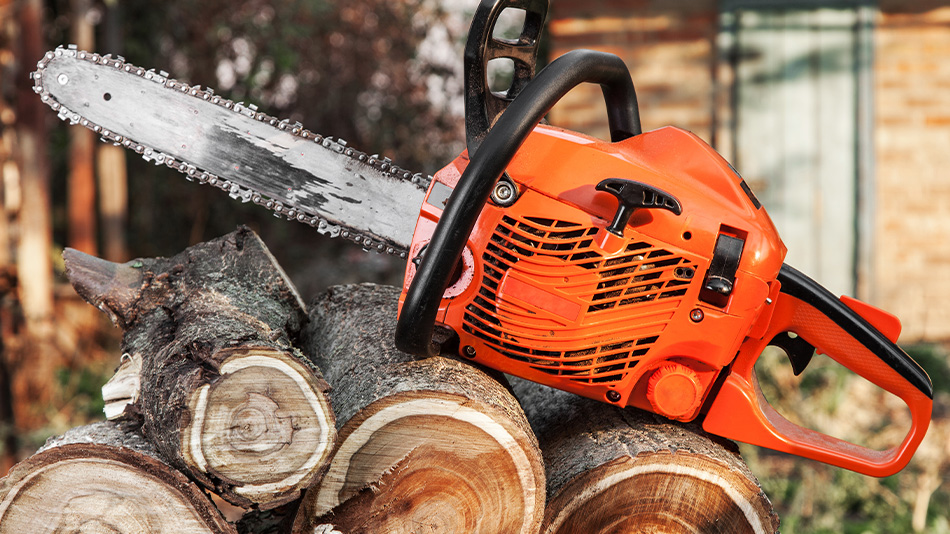If you’re a property owner in Elizabeth, understanding local tree removal laws can make a big difference when maintaining your landscape or addressing potentially hazardous trees. Unfamiliar regulations, complex permitting requirements, and potential penalties can cause confusion and unexpected costs. This comprehensive guide will answer your most important questions, address Elizabeth-specific permit procedures, highlight the risks of non-compliance, and ensure you have the information needed to navigate tree removal with confidence.
When Is a Tree Removal Permit Required in Elizabeth?
In Elizabeth, tree removal laws are stricter than many property owners realize. Permits are required when you want to remove most trees with a trunk diameter of eight inches (measured at breast height) or greater, regardless of whether the tree stands on private or public property. The city makes special distinctions based on the tree’s species, with certain types—such as historic or heritage oaks and maples—subject to even stricter regulations. For trees on city-managed land, such as those along streets or sidewalks, removal is never permitted without city approval, regardless of the tree’s size or reason for removal.
If your property lies within a designated historic district or contains trees identified as protected under local codes, you’ll need to follow additional review steps before any work is allowed. The main goal of these rules is to protect valuable tree canopy, maintain neighborhood character, and support environmental health by discouraging unnecessary removal and encouraging preservation whenever possible.
Routine pruning and maintenance generally do not require a permit, but if your work could threaten the tree’s health—such as removing large branches, significantly reducing the canopy, or impacting stability—a full permit may still be needed. Always check with the Elizabeth Department of Public Works before starting substantial tree work, as laws may change and the city frequently updates its requirements for both residential and commercial properties.
How to Apply for a Tree Removal Permit in Elizabeth
To start the permit process, contact Elizabeth’s Department of Public Works or Code Enforcement. You’ll need to gather specific information and documents before submission, including your property address, species & diameter of the tree, location on the property, and the reason for removal. High-quality photos of the tree and a basic site map are often required for application review. If a tree service company is handling your removal, ensure they’re familiar with Elizabeth’s process and will help you collect and organize this information.
After submitting your paperwork and paying a permit application fee—which usually ranges from $25 to $100 per tree—the city reviews your case. Typical review times can vary from several days to two weeks, depending on the season and application complexity. In most cases, an inspector visits the property to assess the tree’s condition and verify facts in your application. For larger or protected trees, additional city boards or historic commissions might need to approve your request.
If your permit is approved, you’ll receive documentation explaining the next steps. This may include designated removal dates, service restrictions, equipment guidelines, and replanting requirements. Read these terms thoroughly before starting work, and keep your permit on hand during removal. If your tree removal is time-sensitive or involves special considerations—such as proximity to power lines or property disputes—choosing a contractor with a strong track record handling local permits can help the project move forward efficiently.
Why Are Tree Removal Permits Denied Most Often in Elizabeth?
Permit denials most often result from incomplete or insufficient applications. In Elizabeth, simply stating “unwanted tree” is rarely enough. Applicants should provide thorough documentation—including photographs, site diagrams, and, if possible, written evaluations from licensed tree professionals—to demonstrate the necessity of removal. Clearly explain issues such as advanced disease, pest infestation, structural hazard, or documented property damage. Without specific evidence, the city is unlikely to approve removal, especially for healthy, mature trees or those classified as heritage species.
The city also frequently rejects applications if alternative solutions like pruning, cabling, or fertilization could resolve the issue without full removal. Elizabeth’s municipal standards mandate that the tree’s ecological, aesthetic, and community value must be considered before approving any removal. That’s why applications for healthy trees not posing an imminent risk to property or safety are almost always denied.
To strengthen your application and improve your chance of approval, focus on providing details such as:
- Current photos showing disease, decay, or structural hazard
- A recent arborist’s assessment (if available)
- A list of alternative options considered & why they’re insufficient
- Any correspondence or safety notices related to the tree’s condition
- Proposed replanting or mitigation plans, if requested by the city
Strong supporting evidence not only accelerates permit review, but also demonstrates your good-faith intent to comply with Elizabeth tree removal laws.
What Are the Fines & Penalties for Unauthorized Tree Removal?
Removing a tree without the required permit in Elizabeth can lead to substantial fines & penalties. For most first-time residential violations, fines range from $250 to $2,000 per tree. However, removing protected, landmark, or street trees can trigger higher amounts and, in some cases, legal action or misdemeanor citations. In addition to fines, the city may order the landowner to plant new replacement trees—sometimes multiple for each one removed—or require participation in a city replanting fund.
Repeat offenses or cases involving trees on public or city-maintained property can lead to escalating penalties, including stop-work orders and, in severe instances, liens on your property until compliance is achieved. A stop-work order can delay landscaping or renovation projects for weeks or months, and the city may demand a corrective action plan to clear your record before issuing any future permits. These interruptions often cause greater headaches than the original removal cost.
If you’ve mistakenly removed a tree without proper authorization, contact Elizabeth’s Department of Public Works immediately to report the situation and ask about remediation steps. Taking responsibility and cooperating with city officials can sometimes reduce the impact of violations and help you move forward without further delays. Avoid companies that encourage skipping regulations—they put your property value and peace of mind at real risk.
How Does Emergency Tree Removal Work After Storms & Damage?
Storms, high winds, & other severe weather can quickly create emergencies requiring fast tree removal. In Elizabeth, immediate removal is permitted when a tree or major branches pose an imminent public safety threat, block access to homes or streets, or significantly damage property. However, city law requires that you notify the Department of Public Works as soon as possible—ideally within 24 hours—after the emergency work is performed.
City officials distinguish between true emergencies and routine hazard management. Approved emergency scenarios include trees across public roads, threatening utility infrastructure, or dangerously leaning towards occupied buildings. After addressing immediate risk, property owners must submit documentation—like photos and a summary of the circumstances—to explain why immediate action was unavoidable. In some cases, the city may conduct an inspection post-removal to verify the situation met emergency criteria.
Even in urgent cases, it’s important to work with a licensed, insured tree removal service that understands Elizabeth’s emergency protocols and can coordinate response with public safety and city inspectors. Good documentation—including dates, times, and photographic evidence—protects you if the city reviews your removal after the fact and asks for clarification.
Can You Appeal a Denied Tree Removal Permit or City Decision?
If your permit application is denied or you disagree with a city ruling related to tree removal in Elizabeth, you have the right to appeal. The appeal process usually begins by filing a written request with the Shade Tree Commission or other designated appeals entity. Clearly outline your reasons for appealing and include any new, relevant evidence—such as updated arborist reports, photographs, or legal reviews—that could influence the decision.
Most appeals are reviewed within 30 days and may involve a public hearing where you can present your case, answer questions, and respond to concerns raised by city officials or neighbors. The appeals panel reviews evidence from both sides before making a decision. While most decisions are final at the municipal level, further options may exist through state agencies or courts if you believe a significant error occurred.
Success in the appeals process often depends on preparation, evidence, and a clear presentation of why removal is necessary. Many property owners benefit from working with tree companies that have experience with Elizabeth’s appeals system, as they can help prepare documents and ensure compliance with all procedural requirements.
How to Choose a Licensed & Compliant Tree Removal Service in Elizabeth
When selecting a tree removal company in Elizabeth, always confirm that the provider is fully licensed under New Jersey law, carries both liability and worker’s compensation insurance, and has a history of successful jobs within the city. Qualified companies will supply these credentials up front and will be familiar with city permit rules, ensuring your project stays compliant from start to finish. Double-check the business’s credentials with official city or state registries as a precaution.
Avoid providers who suggest bypassing permit requirements or offer rapid services that ignore city procedures. These shortcuts often lead to fines, stop-work orders, and project delays that can cost far more than any perceived initial savings. Choose a company that guides you through the entire process—from initial assessment to paperwork, application, and safe removal—while clearly communicating timelines and city regulations.
Watch for these warning signs when evaluating a tree service in Elizabeth:
- Missing or lapsed insurance coverage
- Reluctance to provide contracts or written estimates
- Inexperience with Elizabeth’s tree removal permit process
- Requests for cash payment or to skip documentation
- Negative reviews referencing penalties or legal problems
Relying on a licensed, reputable provider that’s deeply familiar with tree removal laws in Elizabeth gives you peace of mind while protecting your investment. If you’d like guidance or want to ensure your next project meets every requirement, contact Giron's Tree Service at (908) 529-0093 for a thorough, compliant, and customer-focused experience.


